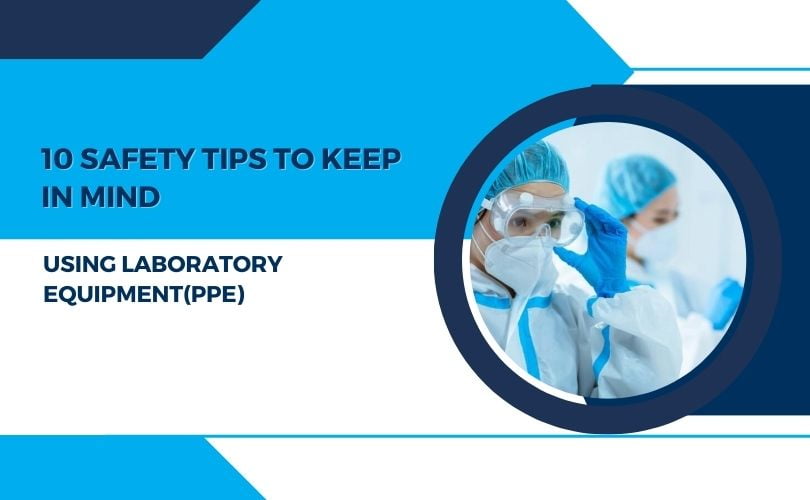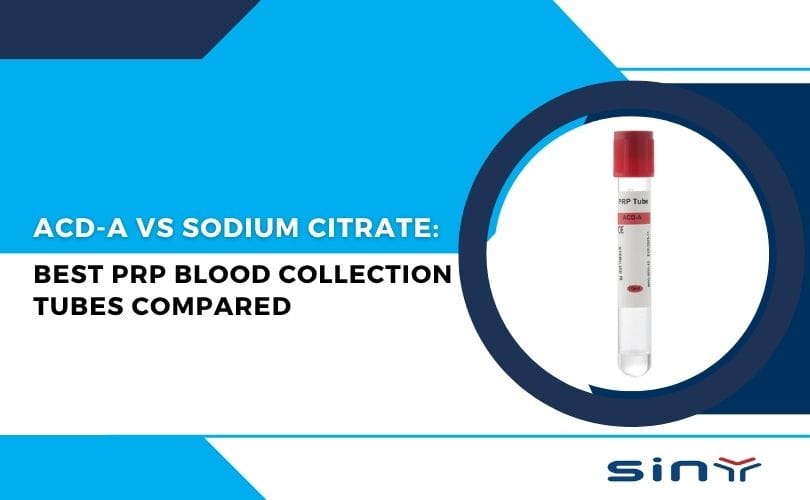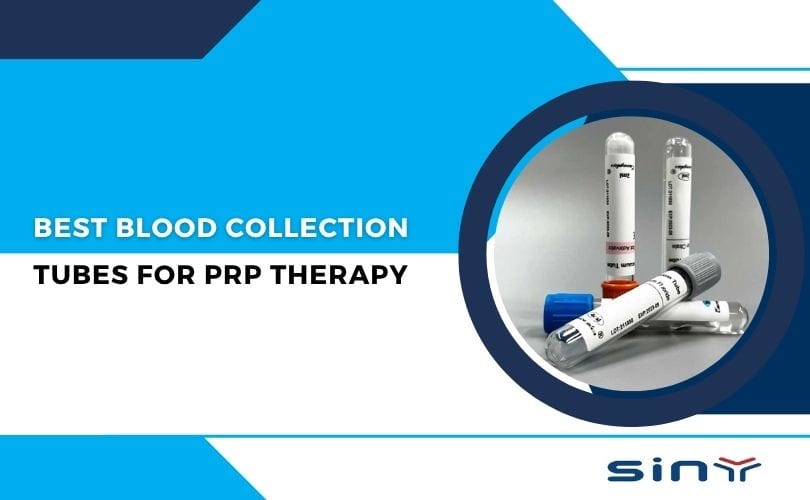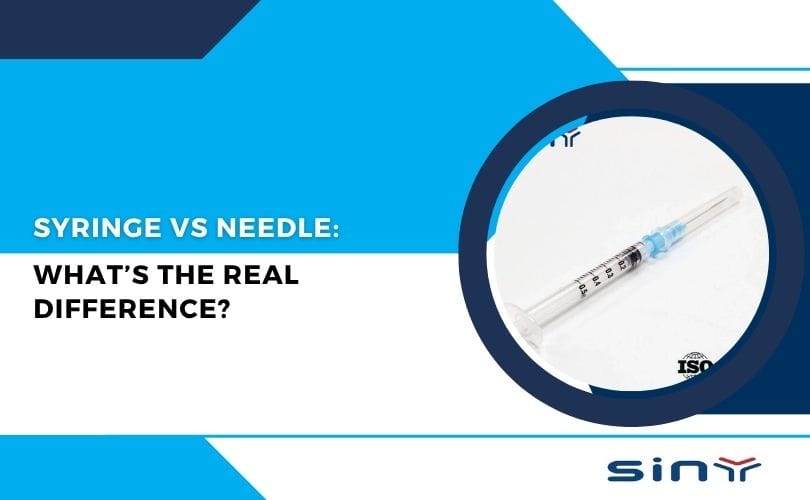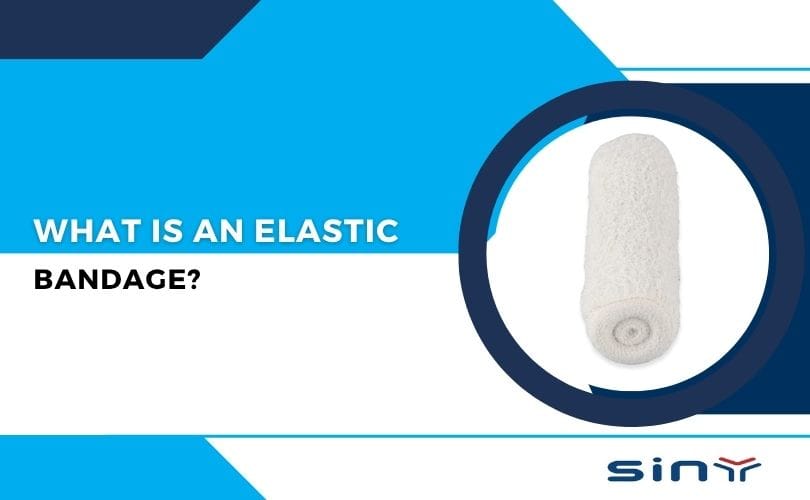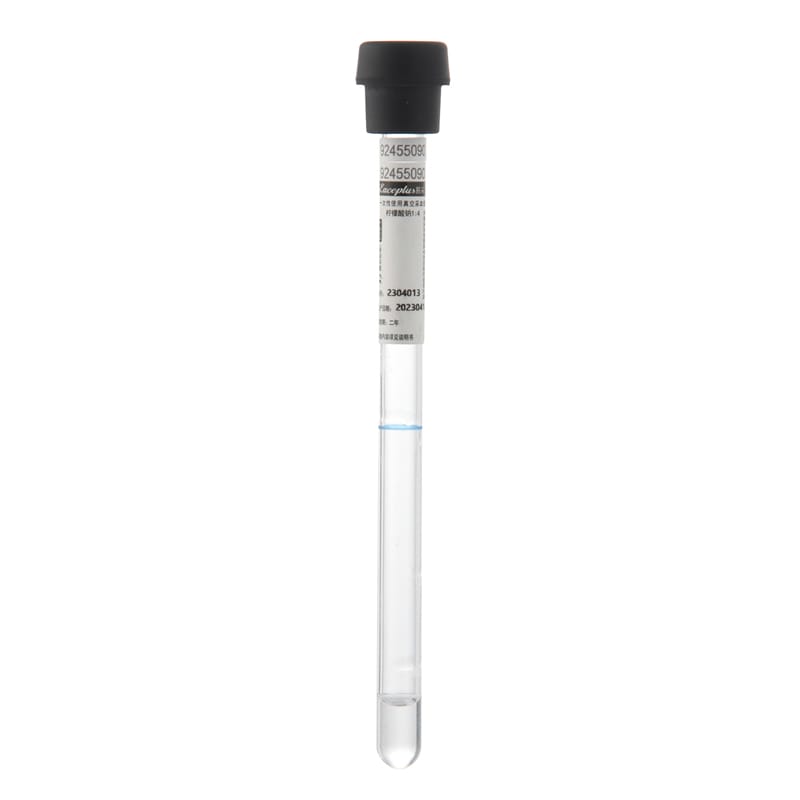Table of Contents
- 1 Introduction:
- 2 1. Insulate electric equipment properly:
- 3 2. Familiarize Yourself with the Equipment:
- 4 3. Dispose of laboratory waste properly:
- 5 4. Replace all damaged cords before using:
- 6 5. Wear Appropriate Personal Protective Equipment (PPE):
- 7 6. Avoid applying or intaking anything on your body while inside.
- 8 7. Safety Tips for Glassware and Apparatus
- 9 8. Conduct Regular Equipment Inspections:
- 10 9. Be Mindful of Electrical Safety:
- 11 10. Handle Chemicals Safely:
Introduction:
Laboratories are environments where scientific experiments and research take place, and they often involve the use of complex equipment and hazardous substances. It is crucial for individuals working in laboratories to prioritize safety to prevent accidents, injuries, and potential damage to equipment. By following proper safety protocols and guidelines, lab personnel can ensure a secure working environment. This article presents ten essential safety tips to keep in mind when using siny medical laboratory equipment.
1. Insulate electric equipment properly:
A laboratory has chemicals, equipment, and appliances that could catch fire. Check all electrical cords frequently, especially those with rubber covers. They frequently degrade quickly.
- Use appropriate insulation materials: Choose insulation materials that are suitable for the specific electrical equipment and the electrical current or voltage involved. Common insulation materials include rubber, plastic, ceramic, and various types of insulating tapes.
- Inspect for damage: Regularly inspect electrical equipment for any signs of damage, such as frayed wires, cracks in insulation, or exposed conductors. Damaged insulation should be promptly repaired or replaced to prevent electrical leakage or short circuits.
- Follow manufacturer guidelines: Adhere to the manufacturer’s instructions and guidelines for installing and maintaining the equipment’s insulation. Manufacturers provide specific recommendations to ensure proper insulation and safe operation.
- Maintain appropriate clearances: Maintain adequate clearances between different electrical components, such as conductors and other conducting parts, to prevent accidental contact and short circuits. These clearances are specified by electrical codes and regulations.
- Proper grounding: Ensure that electrical equipment is properly grounded. Grounding provides an additional layer of safety by redirecting electrical faults or surges to the ground, preventing electric shock or damage to the equipment.
- Install protective enclosures: Some electrical equipment, such as circuit breakers or transformers, may require protective enclosures to shield them from external factors like moisture, dust, or physical damage. Ensure these enclosures are properly installed and provide sufficient insulation.
- Use insulation testing equipment: Periodically test the insulation resistance of electrical equipment using specialized insulation testing equipment. This helps identify any deterioration in insulation quality and enables proactive maintenance.
- Regular maintenance: Implement a regular maintenance schedule for electrical equipment, including inspections, cleaning, and necessary repairs. This ensures that the insulation remains in good condition and that any issues are addressed promptly.
- Training and awareness: Ensure that personnel working with electrical equipment receive proper training on insulation safety practices. They should be aware of potential hazards, proper handling techniques, and the importance of maintaining insulation integrity.
- Compliance with electrical codes and standards: Adhere to relevant electrical codes and standards applicable to your region or industry. These codes provide guidelines for the safe installation, operation, and maintenance of electrical equipment.
2. Familiarize Yourself with the Equipment:
Before operating any laboratory equipment, take the time to thoroughly read the user manual and familiarize yourself with its features, functions, and potential risks. Understand the equipment’s limitations, recommended usage, and maintenance requirements. If you are unsure about any aspect, seek guidance from a knowledgeable supervisor or instructor.
- Stethoscope: A basic diagnostic tool used by healthcare professionals to listen to internal sounds, such as heartbeats, lung sounds, and bowel sounds.
- Blood Pressure Monitor: This device measures blood pressure and consists of an inflatable cuff and a pressure gauge or digital display. It helps assess a patient’s cardiovascular health.
- Thermometer: Used to measure body temperature, thermometers can be digital, infrared, or mercury-based. They are important for diagnosing and monitoring conditions such as fever.
- Otoscope: This handheld instrument is used to examine the ears, primarily the ear canal and eardrum. It helps identify conditions like infections, blockages, or damage.
- Ophthalmoscope: It is a device used by eye care professionals to examine the interior structures of the eye, including the retina, optic nerve, and blood vessels.
- Electrocardiogram (ECG or EKG) Machine: This equipment records the electrical activity of the heart. It helps diagnose various cardiac conditions by displaying the heart’s rhythm and detecting abnormalities.
- X-ray Machine: X-ray machines produce images of the internal structures of the body. They are used to diagnose and monitor bone fractures, lung conditions, and other medical conditions.
- Ultrasound Machine: This device uses high-frequency sound waves to create images of internal organs and structures. It is commonly used in obstetrics, cardiology, and abdominal examinations.
- Surgical Instruments: These tools are used during surgical procedures to cut, dissect, clamp, and manipulate tissues. They include scalpels, forceps, retractors, and scissors, among others.
- Ventilator: A ventilator is a machine that provides breathing support for patients who are unable to breathe on their own. It delivers oxygen and removes carbon dioxide from the lungs.
- Infusion Pump: These devices deliver fluids, medications, or nutrients directly into a patient’s bloodstream. They ensure precise control and regulated flow rates.
- Defibrillator: Used during cardiac emergencies, defibrillators deliver an electric shock to the heart to restore its normal rhythm in cases of cardiac arrest or life-threatening arrhythmias.
3. Dispose of laboratory waste properly:
To prevent potential contamination, laboratories (as well as other healthcare facilities) adhere to a waste management system. The type of object, where and how it was used, and whether it may be recycled all affect the medical disposal waste criteria.
- Segregation: Separate different types of waste into appropriate categories. Common categories include chemical waste, biological waste, sharps (such as needles or broken glass), and non-hazardous waste. Segregation helps ensure that each type of waste is handled and disposed of correctly.
- Chemical Waste: Dispose of chemical waste according to local regulations and guidelines. Chemical waste may include unused or expired chemicals, contaminated solutions, or chemical residues. Follow specific disposal instructions provided by the chemical manufacturer, as well as any applicable laws and regulations. Chemical waste should be properly labeled and stored in designated containers compatible with the waste being stored.
- Biological Waste: Properly dispose of biological waste, such as cultures, specimens, or contaminated materials, according to biohazard waste guidelines. This may involve autoclaving, incineration, or other approved methods that ensure effective sterilization and inactivation of the biological material. Follow local regulations and institutional guidelines for the handling and disposal of biological waste.
- Sharps Waste: Sharps waste, such as needles, syringes, or broken glass, should be placed in puncture-resistant containers. Use designated sharps containers that are properly labeled and sealable. Dispose of sharps containers in accordance with local regulations and guidelines.
- Non-Hazardous Waste: Non-hazardous waste, including general laboratory trash like paper, plastic, or empty containers, should be disposed of in regular waste bins or recycling containers, as appropriate. Ensure that non-hazardous waste is not contaminated with hazardous materials before disposal.
- Radioactive Waste: If your laboratory uses radioactive materials, dispose of radioactive waste in accordance with specific guidelines and regulations for radioactive waste management. Consult radiation safety officers or experts for proper handling, packaging, and disposal of radioactive waste.
- Chemical Spills and Contaminated Materials: In the event of a chemical spill or the presence of contaminated materials, follow established protocols for containment, cleanup, and disposal. Use appropriate personal protective equipment (PPE) and cleanup materials as recommended by safety guidelines.
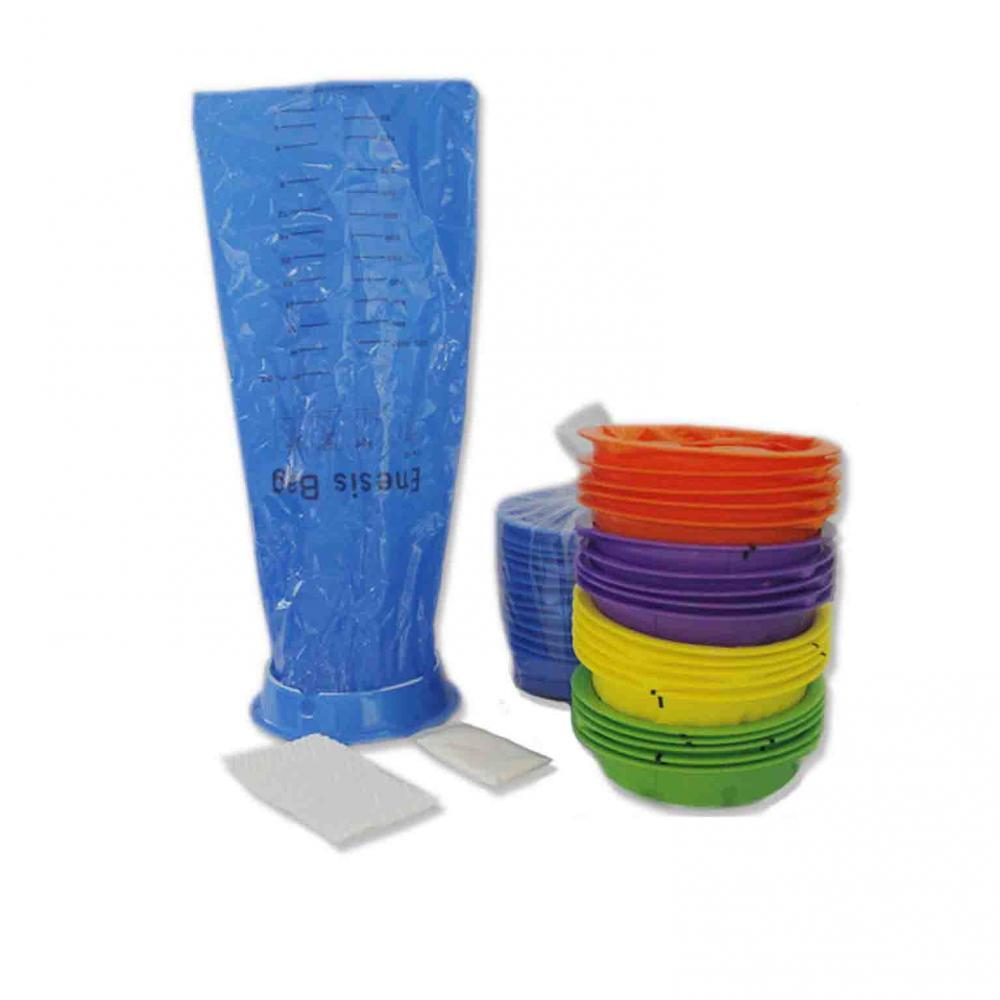
It is important to note that waste disposal procedures may vary depending on the specific regulations and guidelines applicable to your laboratory and location. Consult with your institution’s environmental health and safety personnel or waste management experts for detailed guidance on proper waste disposal practices.
4. Replace all damaged cords before using:
Accidents, ozone, chemical solvents, and even long-term oxidation can occasionally harm cords. Before using these things, it is best to have them fixed properly by qualified experts.
- Visual Inspection: Before using any cord, visually inspect it for any signs of damage, including cuts, fraying, exposed wires, or cracked insulation. Pay close attention to the cord ends, where damage is more likely to occur.
- Replace Severely Damaged Cords: If you identify cords with significant damage, such as exposed wires or extensive fraying, do not attempt to repair them. Instead, replace them with new cords that meet the appropriate safety standards.
- Use Correct Cord for the Application: Ensure that the replacement cord is suitable for the intended use. Different types of cords are designed for specific applications, such as indoor or outdoor use, high voltage, or heavy-duty equipment. Choose a cord that matches the requirements of your equipment and environment.
- Insulation and Grounding: Make sure the replacement cord has proper insulation and grounding. Insulation helps prevent electrical leakage and shocks, while grounding provides an additional layer of safety by redirecting electrical faults. Look for cords with intact, undamaged insulation and appropriate grounding features.
5. Wear Appropriate Personal Protective Equipment (PPE):
Wearing the correct personal protective equipment is crucial in the laboratory. PPE serves as a physical barrier between you and potential hazards. Always wear lab coats, safety goggles, gloves, and closed-toe shoes to protect yourself from chemical spills, flying debris, and accidental exposure. Use specialized PPE, such as face shields or respirators, when working with particularly hazardous substances or equipment.
- Assess Hazards: Identify the specific hazards present in your work environment. These hazards may include physical, chemical, biological, or radiological agents. Conduct a thorough assessment to determine the necessary PPE required for each hazard.
- Select the Right PPE: Choose the appropriate PPE based on the identified hazards. This may include items such as safety glasses, goggles, face shields, helmets, gloves, respirators, earplugs or earmuffs, safety shoes, or protective clothing (such as coveralls or aprons). Ensure that the selected PPE is suitable for the task and provides the necessary level of protection.
- Proper Fit: Ensure that the PPE fits properly and is comfortable to wear. Improperly fitting PPE can limit its effectiveness and cause discomfort or hinder movement. Refer to manufacturer guidelines for sizing and fitting instructions.
- Training and Familiarity: Provide appropriate training to individuals on the correct use, limitations, and maintenance of PPE. Familiarize users with how to properly don, doff, and adjust the PPE to ensure it functions as intended.
- Regular Inspection: Inspect PPE before each use to ensure it is in good condition. Check for any damage, such as tears, cracks, or broken parts, that could compromise its effectiveness. Replace damaged or worn-out PPE promptly.
- Proper Use: Follow the specific instructions for using each type of PPE. For example, wear safety glasses or goggles to protect the eyes from flying debris or chemical splashes, and wear gloves to protect the hands from hazardous substances. Ensure that PPE is worn consistently in areas where it is required.
- Maintenance and Cleaning: Maintain and clean PPE regularly to keep it in good condition. Follow the manufacturer’s recommendations for cleaning, disinfecting, and storing PPE. Store PPE in designated areas to prevent damage and contamination.
- Layering PPE: In some cases, multiple layers of PPE may be necessary to provide adequate protection. Ensure that different types of PPE are compatible and can be worn together without compromising their effectiveness.
- Dispose of PPE Properly: Follow appropriate procedures for disposing of PPE after use, especially if it has been contaminated with hazardous substances. Dispose of PPE in designated containers or as per local regulations.
- Regular Review and Updates: Continuously review and update your PPE requirements based on changes in work processes, regulations, or identified hazards. Stay informed about new PPE technologies or advancements that may offer improved protection.
PPE should be used in conjunction with other safety measures, such as engineering controls and administrative controls, to ensure comprehensive workplace safety. Adhering to proper PPE practices is crucial for safeguarding against workplace hazards and maintaining a safe working environment.

6. Avoid applying or intaking anything on your body while inside.
As a material may change its properties when exposed to different conditions, matter makes up all materials. Take the necessary safety measures, and refrain from consuming any food or liquids while you are still there. To be safe, it’s recommended to avoid using cosmetics or contact lenses.
- Chemical Substances: Refrain from applying or using chemical substances on your body while indoors, particularly in enclosed or poorly ventilated spaces. This includes substances such as solvents, adhesives, paints, or strong cleaning agents. These materials may release fumes or contain hazardous components that could pose health risks when inhaled or absorbed through the skin.
- Consumption of Substances: Avoid consuming any substances, including food, drinks, medications, or personal care products, in areas where it is not permitted or where there may be potential contamination risks. This is particularly important in certain restricted environments like laboratories, manufacturing facilities, or areas with specific safety requirements.
- Adhere to Policies and Regulations: Follow the policies, guidelines, and regulations established by the facility or organization in which you are located. These regulations are typically in place to ensure safety and prevent potential hazards. Adhering to these rules helps maintain a safe environment for everyone present.
- Safe Handling of Hazardous Materials: If you are working with or around hazardous materials, follow proper safety protocols and wear appropriate personal protective equipment (PPE) as recommended. This includes wearing gloves, goggles, or respiratory protection as necessary. Be aware of the potential risks associated with the materials being used and take necessary precautions to minimize exposure.
- Hygiene Practices: Maintain good personal hygiene practices, such as regular handwashing, as appropriate to the environment. This helps prevent the spread of germs and contamination. Follow the designated areas or facilities for personal hygiene, such as restrooms or designated handwashing stations.
- Follow Facility-Specific Guidelines: Certain environments, such as cleanrooms, research laboratories, or medical facilities, may have specific protocols and requirements for personal conduct. Familiarize yourself with these guidelines and follow them accordingly to ensure a controlled and safe environment.
7. Safety Tips for Glassware and Apparatus
Glassware and apparatus in a laboratory or any other setting, it is important to follow safety guidelines to prevent accidents and ensure personal safety. Here are some safety tips to consider:
- Inspect Glassware: Before using any glassware, inspect it carefully for any cracks, chips, or other damage. Do not use damaged glassware as it can break during use and cause injury. Report any damaged glassware to the appropriate personnel for repair or replacement.
- Handle with Care: Handle glassware and apparatus with caution to avoid accidental breakage. Use appropriate gripping techniques, such as holding glassware from the base or using tongs or holders when necessary. Avoid excessive force or sudden movements that may cause the glassware to slip or shatter.
- Wear Protective Gear: Depending on the nature of the experiment or procedure, wear appropriate personal protective equipment (PPE) such as safety glasses, gloves, or lab coats. PPE helps protect against potential hazards, including shattered glass or chemical splashes.
- Use Appropriate Sizes and Types: Select glassware and apparatus that are suitable for the intended purpose. Choose the right size and type of glassware to ensure proper fit and functionality. Using glassware that is too small or incompatible with the chemicals or conditions involved may lead to breakage or other safety issues.
- Use Heat-Resistant Glassware: When working with heat sources, ensure that the glassware is appropriate for the temperature range. Heat-resistant borosilicate glass, such as Pyrex or Duran, is commonly used for high-temperature applications. Avoid sudden temperature changes that can cause thermal stress and breakage.
- Support Apparatus Securely: When setting up the apparatus, ensure that it is properly supported and stable. Use clamps, supports, or stands to secure glassware in place. Avoid overloading or unbalanced setups that can lead to apparatus tipping or glassware falling.
- Use Protective Shields: For experiments involving the potential release of hazardous substances, consider using appropriate protective shields, such as glass shields or fume hoods. These provide an additional layer of protection against spills, splashes, or other accidents.

8. Conduct Regular Equipment Inspections:
Inspect laboratory equipment before each use to ensure its integrity and proper functioning. Check for any signs of damage, such as cracked glassware, frayed cords, loose connections, or faulty switches. If you discover any issues, report them to the appropriate personnel and refrain from using the equipment until it has been repaired or replaced.
- Establish Inspection Schedule: Develop a schedule for regular equipment inspections based on factors such as equipment type, manufacturer recommendations, usage frequency, and criticality. Consider conducting inspections monthly, quarterly, annually, or as specified by regulatory requirements or industry standards.
- Create Inspection Checklists: Develop detailed checklists that outline the specific items or parameters to be inspected for each piece of equipment. Include key components, safety features, electrical connections, fluid levels, moving parts, and any other relevant factors specific to the equipment being inspected.
- Visual Inspection: Perform visual inspections of the equipment to identify any visible signs of damage, wear, or abnormalities. Look for loose or frayed wires, cracks, leaks, rust, misalignments, or any other issues that could affect the equipment’s performance or safety.
- Functional Testing: Conduct functional tests to ensure that the equipment operates as intended. This may involve running the equipment through a full cycle, checking controls, verifying the accuracy of measurements, or performing specific tasks to assess functionality. Refer to manufacturer instructions or equipment manuals for guidance on appropriate testing procedures.
Regular equipment inspections help identify potential issues early on, prevent equipment failures, reduce downtime, and enhance overall safety. By implementing a systematic and proactive approach to inspections, organizations can maintain equipment reliability, prolong equipment lifespan, and minimize risks associated with equipment failure.
9. Be Mindful of Electrical Safety:
Laboratory equipment often relies on electrical power, which introduces an additional safety concern. Avoid using equipment with damaged power cords or exposed wires, as they pose a risk of electrical shock or fire. When plugging or unplugging equipment, grasp the plug itself rather than pulling on the cord. Furthermore, keep electrical equipment away from water sources and use ground fault circuit interrupters (GFCIs) when necessary.
- Respect Electrical Appliances and Equipment: Treat electrical appliances and equipment with care and respect. Follow manufacturer guidelines, instructions, and safety precautions for proper use, maintenance, and storage.
- Unplug When Not in Use: When not using electrical devices or equipment, unplug them from the power source. This reduces the risk of electrical shock, prevents energy waste, and eliminates the possibility of a device malfunctioning and causing a fire.
- Avoid Overloading Outlets: Do not overload electrical outlets or extension cords by plugging in too many devices. Distribute the load evenly among different outlets and consider using power strips with built-in surge protectors to accommodate multiple devices safely.
- Check for Damaged Cords or Plugs: Regularly inspect cords and plugs for any signs of damage, such as fraying, cracking, or exposed wires. Replace damaged cords or have them repaired by a qualified professional to prevent electrical hazards.
- Use Ground Fault Circuit Interrupters (GFCIs): Install GFCIs in areas where water is present, such as kitchens, bathrooms, garages, and outdoor outlets. GFCIs detect electrical imbalances and shut off the power to prevent electric shocks.
- Keep Water Away from Electricity: Keep electrical appliances, cords, and outlets away from water sources to avoid the risk of electric shock. Ensure that your hands are dry when handling electrical devices or plugging and unplugging cords.
- Use Electrical Safety Covers: Install safety covers on unused electrical outlets, especially if there are children in the vicinity. Safety covers prevent the accidental insertion of objects into outlets, reducing the risk of electrical shock.
- Use Surge Protectors: Protect sensitive electronic equipment from power surges by using surge protectors. Surge protectors divert excess voltage, safeguarding devices against damage caused by sudden electrical spikes.
Electrical safety is everyone’s responsibility. By practicing caution, following safety guidelines, and seeking professional assistance when needed, you can help create a safe environment and prevent electrical accidents
10. Handle Chemicals Safely:
Laboratory equipment that involves chemicals, exercise caution and follow proper safety protocols. Always label and store chemicals correctly in designated areas. Be aware of the properties and hazards associated with the chemicals you are using, such as flammability, toxicity, or reactivity.
- Obtain and Review Safety Data Sheets (SDS): Before working with any chemical, obtain the corresponding Safety Data Sheet (SDS) from the manufacturer or supplier. Familiarize yourself with the information provided, including hazards, handling precautions, proper storage, and emergency procedures.
- Use Personal Protective Equipment (PPE): Wear appropriate personal protective equipment (PPE) when working with chemicals. This may include gloves, goggles, lab coats, aprons, respirators, or other protective gear. Select the PPE based on the chemical’s properties and the task at hand.
- Work in a Well-Ventilated Area: Conduct chemical-related activities in a well-ventilated area to minimize exposure to hazardous vapors or gases. Ensure that fume hoods or ventilation systems are functioning properly and follow local regulations or guidelines for ventilation requirements.
- Label and Store Chemicals Properly: Clearly label all chemical containers with the name of the substance, hazard warnings, and date of receipt. Store chemicals in appropriate containers and in designated storage areas based on their compatibility and storage requirements. Separate incompatible chemicals to avoid the risk of reactions or accidental mixing.
- Follow Proper Handling Techniques: Adhere to proper handling techniques for each chemical. This includes using the correct tools and equipment, such as pipettes, spatulas, or funnels, to avoid direct contact with chemicals. Avoid transferring chemicals by mouth, and never smell or taste chemicals to identify them.
- Handle with Care: Exercise caution when handling chemicals to prevent spills or splashes. Use appropriate techniques when pouring or transferring chemicals to minimize the risk of accidents. Be mindful of the weight and stability of containers to avoid dropping or tipping them.
- Minimize Exposure: Limit exposure to chemicals by working efficiently and using appropriate containment measures. Use chemical fume hoods, glove boxes, or other engineering controls when handling volatile or hazardous substances. Avoid inhalation of vapors, direct skin contact, or ingestion of chemicals.
- Clean Up Spills Promptly: Clean up chemical spills immediately using appropriate procedures and materials. Follow established spill response protocols, wear appropriate PPE, and use absorbents or neutralizing agents as recommended for the specific chemical. Dispose of the waste properly and safely.
- Wash Hands Thoroughly: Practice good hand hygiene by washing hands thoroughly with soap and water after working with chemicals, even if gloves were worn. Use hand sanitizers only as a supplementary measure and not as a substitute for handwashing.
- Chemical Disposal: Dispose of chemicals in accordance with local regulations, guidelines, and best practices. Follow appropriate disposal methods for different types of chemicals, including hazardous waste, and never dispose of chemicals down the drain or in regular trash without proper treatment or authorization.
- Train and Educate: Ensure that individuals working with chemicals receive proper training on safe handling, storage, and disposal practices. Regularly update their knowledge of chemical hazards, emergency procedures, and the proper use of safety equipment.
Each chemical may have unique hazards and handling requirements. It is important to be aware of these specifics and take appropriate precautions. By following safe practices, maintaining good communication, and prioritizing safety, you can minimize risks associated with chemical handling and create a safer working environment.
Conclusion:
Laboratory equipment plays a vital role in scientific research and experimentation, but it can also present potential risks if not handled with care. By following these ten safety tips, you can significantly reduce the chances of accidents, injuries, and hazardous incidents in the laboratory. Remember to always prioritize your safety and the safety of those around you by wearing appropriate PPE, following proper handling procedures, maintaining equipment integrity, and being prepared for emergencies. By creating a culture of safety and vigilance, we can ensure a secure and productive laboratory environment.


